Media | Articles
10 of the best books about road trips
When I was hired at Car and Driver 34 years ago, editor-in-chief William Jeanes said: “P.J. O’Rourke has fled to D.C. to interrogate politicians. You’re replacing him. Try to be funny. Try.” I immediately phoned P.J. to ask, “You got any unused material stuffed behind the refrigerator?”
We thereafter remained friends, at least until February 2022, when P.J. hit life’s ultimate blind curve. “Not blind so much as deeply nearsighted,” he’d earlier told me in front of a bonfire at a Subaru introduction in Vermont. We were right then sipping Wild Turkey that had rendered us both groggily nearsighted. Before P.J. exited this fitful realm, he and I were trading favorite road-trip books. “Gotta be a bunch we’re not remembering,” he said at least three times, and I’m sure that’s true. Anyway, what follows is what first came to mind, apart from, “Watch that spark, I think your pants are on fire.”
***
Marketplace
Buy and sell classics with confidence

On The Road
by Jack Kerouac
Any list of American road-trip books must begin with On the Road (1957) by Jack Kerouac. It is neither what today’s youth would describe as “accessible” nor particularly welcoming. These pages relate the tale of Kerouac (calling himself Sal Paradise) and pal Dean Moriarty’s sometimes numbing peripatetics in, first, a mud-splattered 1949 Hudson, in which they may have motored (I lost track) from New York to San Fran to Denver to San Fran to Sacramento to Denver. Then in a ’47 Cadillac limousine they aimed at Chicago but not before sinking it in a ditch, ensuring that “girls were frightened of our big, scarred, prophetic car.” By then it was neither prophetic nor stopping reliably, given its scorched brakes.
That was followed by a bus trip to Detroit, then via Chrysler to Long Island, then via ’37 Ford sedan (with the right door attached by rope) to Mexico City, where Kerouac contracted dysentery, eventually nursing his weary corpus back to his New Jersey home to complete what he describes as “pointless driving with minor adventures at intervals.”
On the Road is nonetheless important. It is said to have spawned the Beat Generation (well, maybe) as well as the New Journalism practiced by Tom Wolfe and Hunter S. Thompson (almost certainly).
***
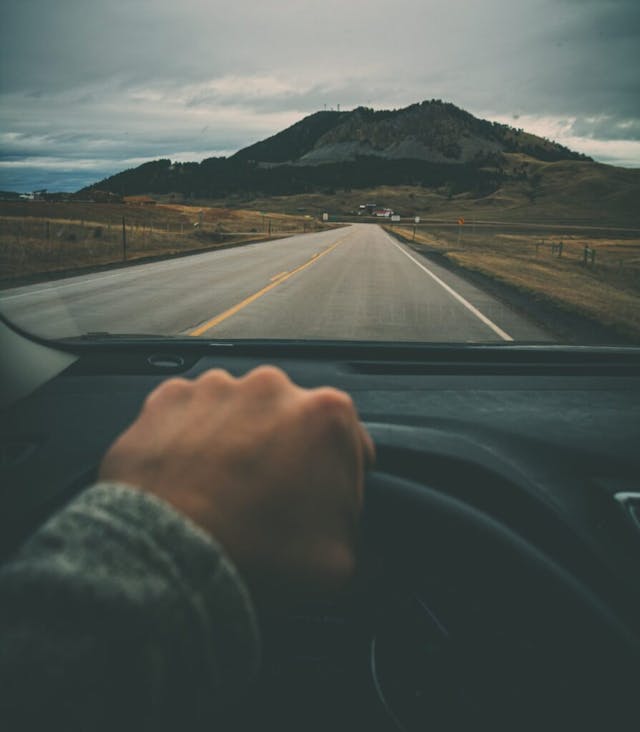
Blue Highways
by William Least Heat-Moon
And now, of course, having suggested that On The Road comprises the quintessential road book, I must report that William Trogdon (aka William Least Heat-Moon) asserts, “Kerouac was in no way an influence.” That’s in reference to Blue Highways (1982), in which the author drives a 1975 Ford Econoline van (with failing water pump) 13,000 miles over three months, encircling the country, starting and ending in Columbia, Missouri. “I can’t say, over the miles that I had learned what I wanted to know,” he offers, “because I hadn’t known what I wanted to know. But I did learn what I didn’t know I wanted to know.” Following this opaque Rumsfeldian introspection, the remainder of the book emerges somewhat clearer.
Reading Blue Highways, you’ll pick up U.S. history, even though one of its characters opines, “American history is parking lots.” Although the author rarely dips his brush in humor—a criticism of all Least Heat-Moon’s books—he sometimes stumbles upon it: Says John Steadman, in the Dorr Rebellion of 1842: “Boys, when you see the enemy, fire and then run. And as I am a little lame, I’ll run now.”
Adds the author, “Part of the purpose for the trip was to be inconvenienced, so I might see what would come from dislocation and disrupted custom. Answer: severe irritability.” Living in a van, often down by the river, turns out to be a festival of pestilence.
***
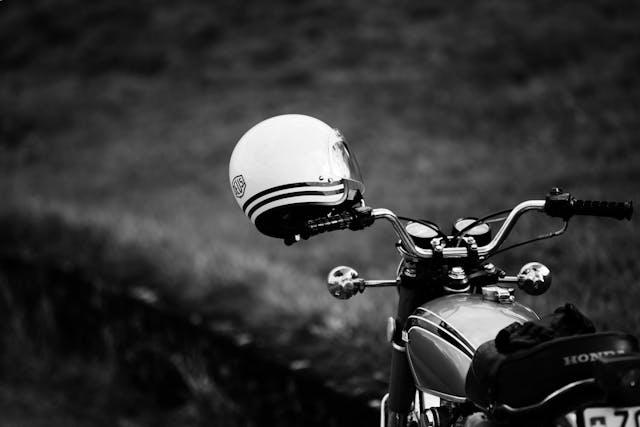
Zen and the Art of Motorcycle Maintenance
by Robert Pirsig
And now to Robert Pirsig, who can be difficult even at idle, and he idles often in Zen and the Art of Motorcycle Maintenance: An Inquiry Into Values (1974). As is true with James Joyce’s Ulysses, you don’t read Zen. You reread Zen. You should know that Pirsig was influenced by Kerouac. So, there, I told you so.
In this celebrated door stop, Pirsig travels westward—dallying longest in Montana—atop a Honda motorcycle showing 27,000 miles (year and model annoyingly unspecified) with troubled son Chris clinging to his waist. Pirsig’s description of the route is vivid, but at least half the text is a philosophical treatise in which he teases out the definition of “quality.” Mind you, that’s Pirsig’s former mentally ill self at work, a persona he’s named Phaedrus. Unfortunately, neither Phaedrus nor the electroshock-cured Pirsig is particularly likable. His cerebral voyages often feel preachy—“So, listen,” Pirsig begins a graf—and the answers to his questions are often found in the Japanese word mu: neither yes nor no.
The author eventually settles on this: “Quality is the continuing stimulus which causes us to create the world in which we live.” Says who? Pirsig? Phaedrus? Jay Leno?
Pirsig mentions Zen koans but should have contemplated the most famous: “What’s the sound of one hand clapping?” Well, clapping, by meager human definition, stipulates two hands, so the question itself contains the flaw that makes it unanswerable. It’s like asking, “Why isn’t infinity only half as far?”
Two books are complicatedly commingled here—a road trip and a philosophical crossword puzzle—yet Zen endures.
***

Great Plains
by Ian Frazier
Setting out in a rusty van freshly serviced at Mike’s Sohio and occupying motels every third or fourth night, Ian Frazier investigated Wisconsin, Minnesota, South Dakota, Montana, and just about everything as far south as western Texas. From his notes emerged Great Plains (1989): “Just grain silos and flat brown fields with one cow in them, and wheat fields and telephone poles, and towns with four or six buildings, and a ‘No U-Turn’ sign at each end.” It’s a 6000-mile ramble on byways as flat as road-jiggled beer, unremarkable terrain for most of us. Yet Frazier emerges as an enthused historian and advocate for our geographically least celebrated region. And his writing informs: “In all of the years of the cattle boom, fewer people were shot or stabbed in Dodge City than die violently in New York City in three days.” OK, faint praise, but Midwesterners will take it.
***

Road Fever
by Tim Cahill
There can be no road trip more faithful to the unvarnished ideal than Road Fever (1991). Driving a 1988 GMC Sierra diesel pickup, Canadian driver Garry Sowerby and Montana author Tim Cahill attempt to set a Guinness record driving 15,000 miles through 13 countries, beginning at Tierra del Fuego and concluding at Prudhoe Bay, Alaska. You just know the text is authentic: First, in response to Sowerby’s criticism of his driving, Cahill fantasizes about how hard and exactly where he will punch his codriver in the face. Second, Sowerby says, “Every time, and I mean every time I modify a vehicle, the aftermarket stuff craps out on me.”
Cahill and Sowerby arrive at their destination in 23 days, 22 hours, and 43 minutes. They are filthy, sleep-deprived, hallucinating, and not embodying what you’d call acceptable security risks. Road Fever caustically captures the frustration and frequent futility of long-distance driving.
It’s always less fun than it sounds.
***

Uneasy Rider
by Mike Carter
I’ve read Mike Carter’s Uneasy Rider (2008) three times, yet the twists and turns still delight. Drunk at a Christmas party, Carter boasts of riding into the sunrise to quell his then-aborning midlife crisis.
Then actually does it. First, however, he must purchase a BMW R1200GS and enroll in a course to learn to operate it. After which he more or less immediately finds himself in Calais with no idea which way to turn.
That’s because he’s sober by then.
Six months and eight worn-out tires later, he’d ridden 19,950 miles through Scandinavia, Eastern Bloc Europe, Turkey, and Greece. He lost his underwear twice, cruised through 27 countries, and recorded this memorable notation: “Number of countries where I was informed that the next country was dangerous: 27.”
Mixing alcohol and party-time braggadocio is always fun, but mostly for onlookers. For readers, too.
***
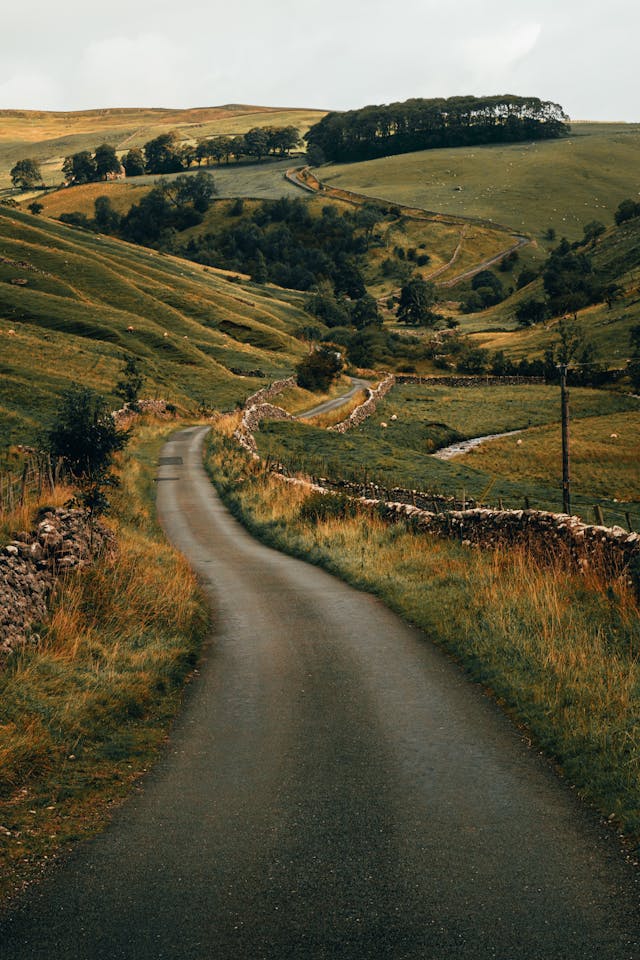
The Road to Little Dribbling
by Bill Bryson
Another acutely observant road-trip celebrant is Bill Bryson, whose The Road to Little Dribbling (2015) is a follow-up to his Notes From a Small Island. Bryson was born in Iowa, noting, “America… has become spectacularly accommodating to stupidity.” He thus tours his adopted country, the U.K., mostly on foot, in buses, and on trains, with a brief bout in a rental car that is not described. Still, he’s road-bound for weeks and his narration is droll, dry, and diabolical. Plus, he finds plenty of Brit-flavored stupidity. This book should be a movie.
***

Driving Mr. Albert
by Michael Paterniti
Michael Paterniti’s Driving Mr. Albert: A Trip Across America with Einstein’s Brain (2000) is equally shadowy and darkly amusing. The author sets out from New Jersey, chauffeuring the doctor who performed Einstein’s autopsy and afterward refused to give up the great man’s brain. That particular organ, sloshing in a Tupperware container in the trunk of a teal Buick Skylark, is to be delivered to an Einstein heir in Berkeley. Thus the cross-country poke.
Included is a surreal interlude in Kansas to visit writer William S. Burroughs, who has just downed his daily dose of methadone while chugging five Coke-and-vodkas. What follows—fasten your shoulder belt—goes a long way toward explaining Naked Lunch.
***
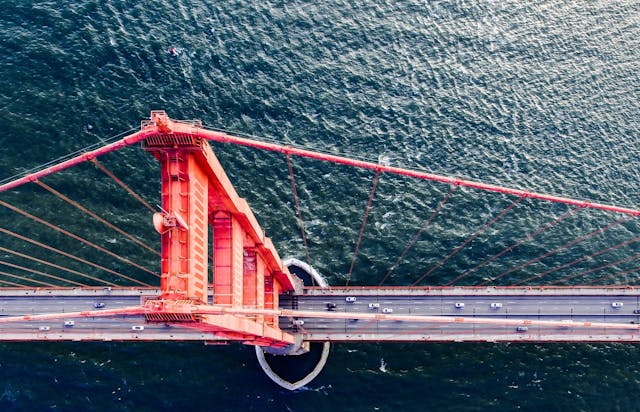
A Life on the Road
by Charles Kuralt
Charles Kuralt’s A Life on the Road (1990) appeals in part because, while on assignment, I drove his final CBS “On the Road” and Sunday Morning motorhome from Chicago to The Henry Ford Museum. I yet possess Charlie’s mittens and four of those little airline boozeettes he secreted in cubbyholes.
His TV team’s first motorhome, in 1967, was a Travco on a Dodge truck chassis. Kuralt replaced cracked wheels weekly. After a second Travco proved equally obese and happy to fail, the crew switched to a Revcon. Then to an FMC whose wiper flew off upon first use, whose A/C blew every single fuse, and whose carburetor was so prone to icing that they attached to its housing a Clairol hair dryer.
Kuralt stayed in touch with me for a couple years. I worshiped the guy, the storytelling happy-go-lucky uncle every kid covets. Of course, he was briefly married to two women, a not-so-legal ménage that none of my own uncles ever achieved. I’d wager that Kuralt is more than half responsible for Bill Bryson.
***

Driving Like Crazy
by P.J. O’Rourke
Even though Mr. O’Rourke objected—heehawed as if a judge had directed me to professional counseling—I must recommend P.J.’s Driving Like Crazy: Thirty Years of Vehicular Hell-Bending (2009). This volume includes his archetypal tale of driving a 1956 Buick Special from Florida to LA, with Brit photographer Humphrey Sutton frequently offering advice. In this tale, published in C/D, so many mechanisms broke on the Buick that P.J. abandoned that list in favor of enumerating parts that merely fell off. During this 11-day misery-infused excursion, Sutton usually coped with roadside disasters via alcohol. Quite a lot, actually.
The book includes a second story, one that I assigned, in which P.J. was to drive a new Ford Flex from LA to his home in New Hampshire. In attendance were wife Tina and three toddling offspring. P.J. abandoned all hope in Denver. Don’t try to read Driving Like Crazy on an airplane. Your convulsions will draw the attention of air marshals.
I should note that P.J. and I had second thoughts about a few otherwise celebrated candidates. Among them was Che Guevara’s The Motorcycle Diaries (2003), the tale of Mr. Revolutionary’s 1952 trip with pal Alberto Granado, both riding a not-so-fast but fast-deteriorating Norton 500 dubbed La Poderosa II, or the “Mighty One.” It was in no way mighty. Heading north from Buenos Aires, Che and pal reduced the bike to fractured oil-smeared shards of alloy suited only for a Nicaraguan smelter. And that’s on page 63. So, not even half a road trip.
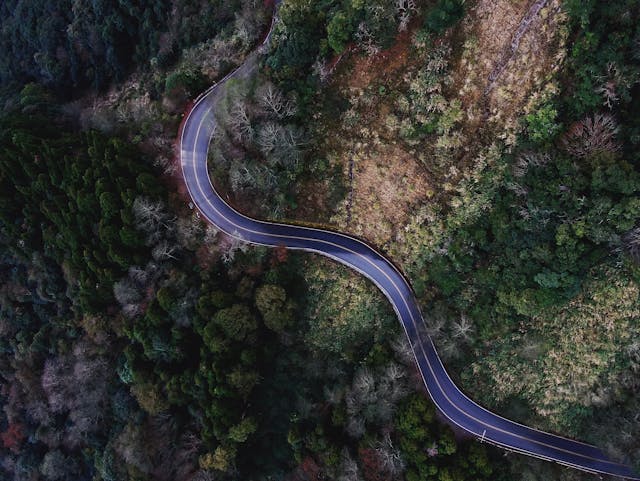
Our other notable discard, surprising both of us, was John Steinbeck’s Travels with Charley: In Search of America (1962). Driving a GMC pickup he named Rocinante, accompanied by prissy poodle Charles le Chien, Steinbeck set off from Long Island. He thus did not have far to begin his search for America.
Know what? The writing of one of this country’s literary treasures doesn’t stand the test of time. Moreover, sections of the book are, uh, dodgy, such as Steinbeck’s one-time cook claiming to have attached deer “horns” (they’re antlers, sir) to a tree, subsequently harvesting the lead from errant hunters’ gunshots. “Some seasons he got fifty or sixty pounds.” OK, whatever. Or Steinbeck’s whirlwind 50-hour toot in which he claims to have driven 800 miles in Montana and Idaho while undergoing alcoholic therapy in six Big Sky dives. “Never happened,” Montanans unanimously assert. And yet, the guy is actually, you know, John Steinbeck.
***
John Phillip’s latest book is Four Miles West of Nowhere: A City Boy’s First Year in the Montana Wilderness, published by Pronghorn Press.
This article first appeared in Hagerty Drivers Club magazine. Click here to subscribe and join the club.
Check out the Hagerty Media homepage so you don’t miss a single story, or better yet, bookmark it. To get our best stories delivered right to your inbox, subscribe to our newsletters.
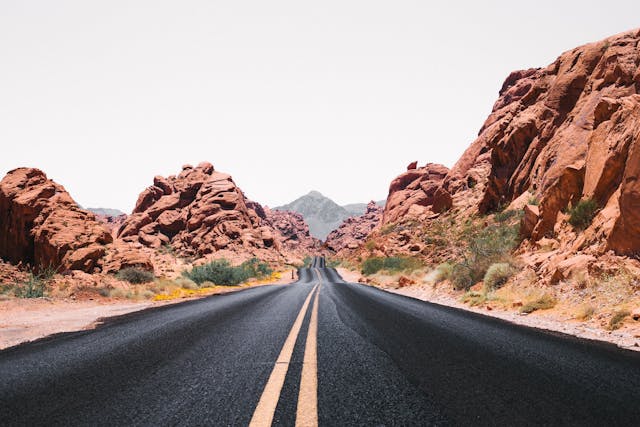













Robert Pirsig’s bike was a Honda 305 Superhawk. There are enough mechanical clues in the book to narrow it down. There are photos of Robert and his son on it.
I believe that is correct and if I remember correctly it is now in the Smithsonian in DC…
You both are correct. It was a 1966 Superhawk and was added to the Smithsonian collection back in 2019: https://www.hagerty.com/media/motorcycles/bike-behind-zen-and-art-of-motorcycle-maintenance-joins-smithsonians-collection/
Really? My memory is that it was a CB450.
Also “Travels with Charley” by John Steinbeck…it is worth a read or reread if it’s been a while…
Came here to say this. Great book, as are all of Steinbeck’s.
Amen! He’s my favorite.
I missed out on meeting Elaine, his wife.
I was amazed “Travels with Charley” was not on the list. It was required reading in high school and is responsible for my lifetime of wander lust.
Its omission is addressed (poorly) at the end. Its omission also invalidates the list. The author cavils over minor hyperbole to disqualify it and ignores that Steinbeck wrote some of the great travel/migration books of all time in American literature.
Though it was precipitated by a double-tragedy, the late Neil Peart’s “Ghost Rider” is excellent.
Agreed. Amazing story.
And his Traveling Music is a lovely memoir told as he drives his BMW Z8 intertwining his growing up and into music
Brilliant. Welcome back John.
If you want to brag to some folks down at the coffeehouse, read Zen and the Art of Motorcycle Maintenance. If you want to ENJOY reading a book, pick any of the others – especially Kuralt and O’Rourke. 😃
I feel like there might be statements I’m not supposed to publicly agree with, so I guess this sentence ends here.
I have just stolen your comment to pass on to a lot of people – both kinds. Thank you
Well, the book is full of philosophical musings, but if you pick up a book with “Zen” in the title, I would think you would be forearmed for that. I found it very readable and very enjoyable.
What, no Peter Egan? Wrong magazine, I guess.
What, no “The Last Open Road”?
The absence of Robert Fulton’s ‘One Man Caravan’ calls the legitimacy of this entire list into question.
I totally agree, what a story
The list was a recollection of a conversation, not selections from your favorites.
“The Lost Continent… Travels in Small Town America” by Bill Bryson would be a great add. It chronicles his trip around the US reliving some of the stops from family car trips as a kid. Sometimes sarcastic, sometimes biting, but also laugh-out-loud funny, it’s a great book.
” Jupiter’s Travels ” Ted Simon ? ? ?
Not many glowing reviews here. I’m sure I’d prefer rereading Matt Anderson’s columns.
As well as the various books suggested (I’ve only read The Road to Little Dribbling and Travels With Charlie), I was fascinated by many of the beautiful accompanying photos. It’s a pity there aren’t attributions or explanations — can we have that too, please?
Geez, what I would have paid to witness a fireside or barside chat between Mr. O’Rourke and Mr. Phillips.
It’s funny, not that long ago I was wondering what happened to Mr. Phillips. I haven’t read Car and Driver in some time as it began to change for the worse.
I have read the first three and haven’t heard about most of the rest. I agree that “Travels with Charley” and some of the Peter Egan compilations would be worthy additions.